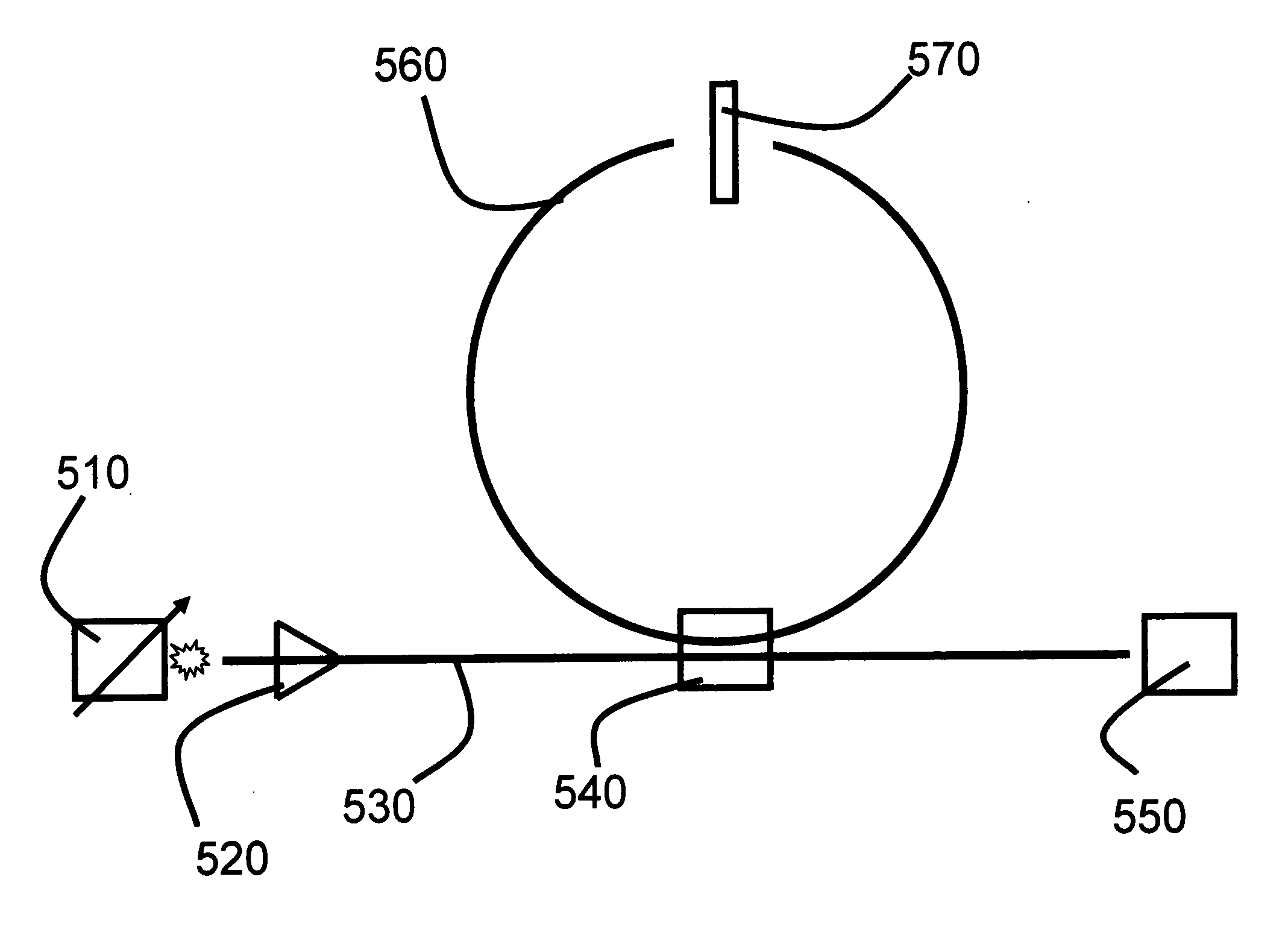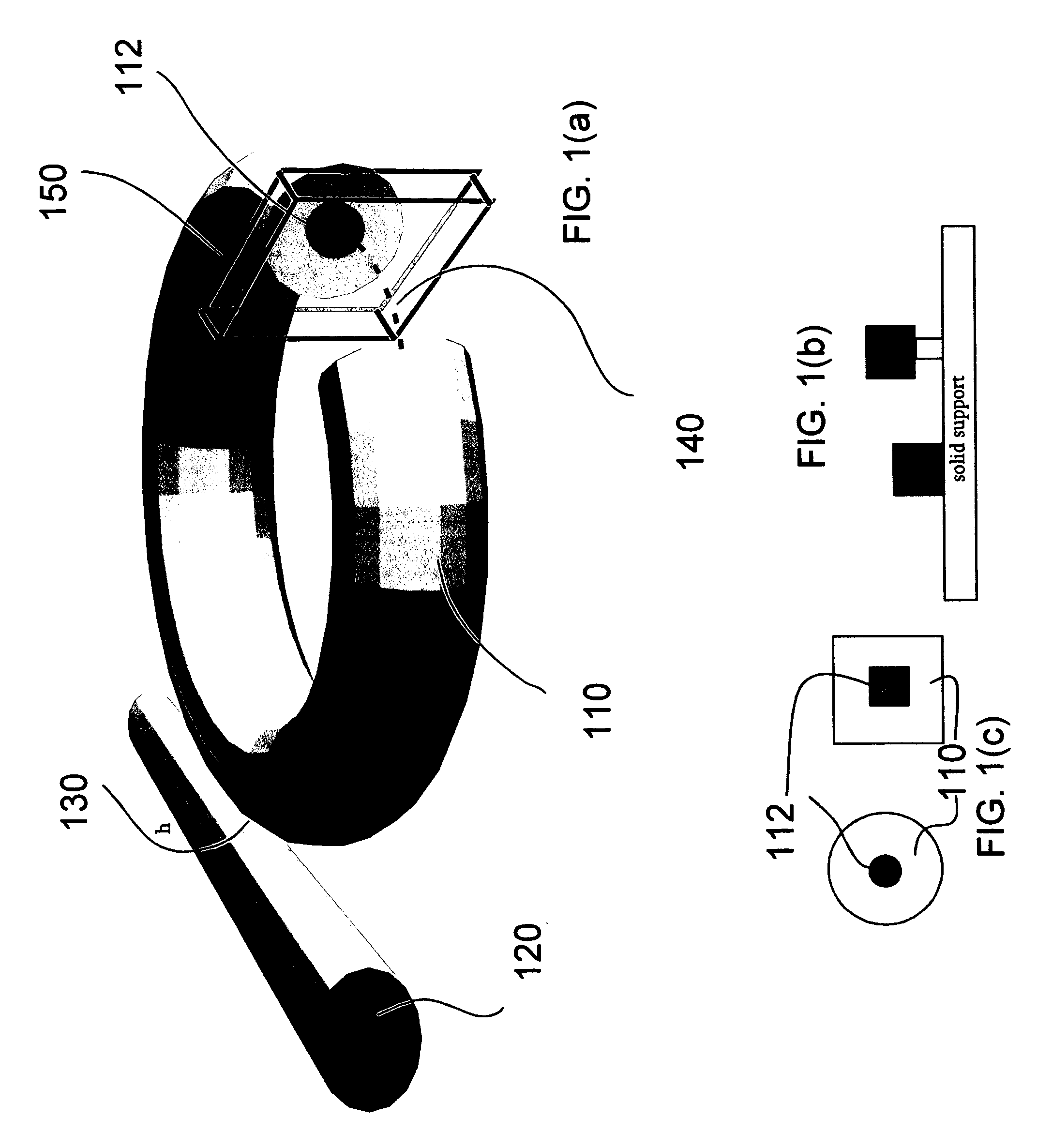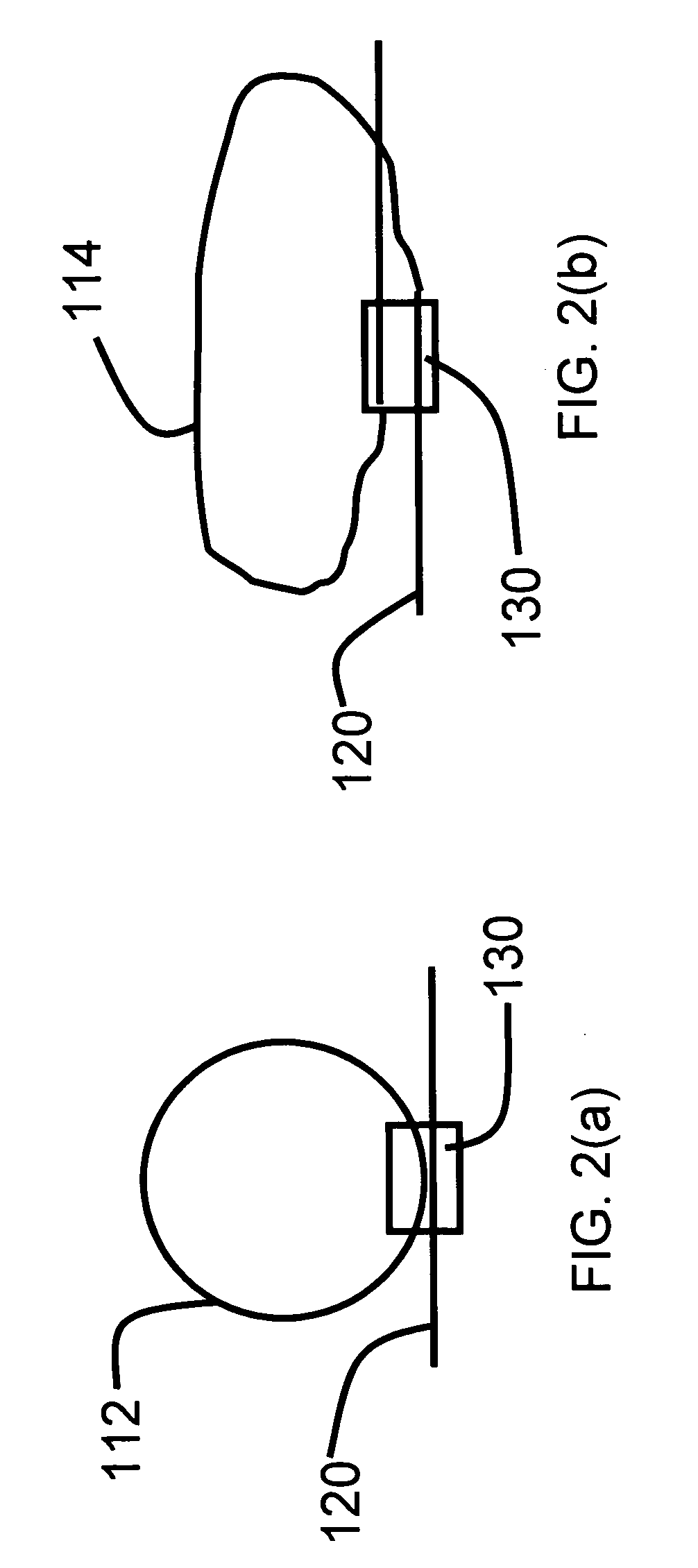Method and apparatus for measuring and monitoring optical properties based on a ring-resonator
a technology of optical properties and ring resonance, applied in the direction of optics, optical elements, instruments, etc., can solve the problems of birefringence in optical components affecting quality, and achieve the effect of convenient relative frequency measuremen
- Summary
- Abstract
- Description
- Claims
- Application Information
AI Technical Summary
Benefits of technology
Problems solved by technology
Method used
Image
Examples
example 1
[0094] Example 1 will be described with reference to FIGS. 5(a), 5(b), 6(a) and 6(b). A tunable distributed feedback (DFB) laser diode 510 operating at nominal infrared wavelength of 1.31 μm was coupled into a single mode optical fiber 530 using a single stage coupler (not shown). An inline optical isolator 520 isolates the source from the remaining optical circuit. Using a fiber optic U-bench (not shown) such as Thorlabs, part # FB220-FC, light is passed through a polarizer 610 and a half waveplate (λ / 2) 620. The optical fiber ring 560 is closed with a conventional 50 / 50 coupler 540, such as the Thorlabs, part # SMC11350229U. The light is detected using a conventional InGaAs photodetector 550, such as Thorlabs, part #PDA400. The laser wavelength may be tuned by modulation of the diode current at 100 Hz. For each scan, an intensity spectrum is measured with the photodiode 550 and digitally recorded on a computer (not shown). The tuning coefficient of the laser was previously determi...
example 2
[0096] Example 2 will be described with reference to FIGS. 7(a) and (b). The figures schematically depict an alternate resonant ring structure for the measurement of refractive indices and or the detection of biological and / or chemical agents. It shows that the resonant light can be tapped using a second linear waveguide that is coupled to the resonator. This example directly demonstrates the presence of the two orthogonally polarized light states in the resonant ring. Two different polarization states are analyzed using the polarizer 720. It also shows how two or more resonant structures can be coupled using a common linear waveguide: instead of 720 and 750, the light can be rerouted to a different spectroscopic investigation e.g. another resonant structure. In the apparatus shown in FIG. 7(a), the optical circuit of FIG. 6(a) has an additional 50 / 50 coupler 740 and an additional polarizer 720. The second 50 / 50 coupler 740 allows resonant light to be coupled out of the ring. With t...
example 3
[0110] A sample cell of 10 cm path length was introduced into a resonant ring of ˜60 cm total circumference FIG. 10a. The sample cell was first filled with R-limonene. A transmission spectrum of the resonant modes was recorded using a tunable distributed feedback laser 510 with a nominal wavelength of 763 nm. The half-wave plate 620 was positioned so that two modes were excited simultaneously.
[0111] Before taking the measurements, the light is analyzed with the detector 950. A quarter waveplate 920 is positioned in the beam in front of a linear polarizer 910. By turning the polarizer by 90 degree we can select for one of the two orthogonal set of resonant modes (dark and light solid lines in FIG. 10b). By adjusting the quarter waveplate 930, the resonances were changed so that the two modes analyzed by 910 correspond to left and right circular polarized light respectively. The two modes with orthogonal polarization states can be observed as peaks by detector 950 or as dips by a pho...
PUM
 Login to View More
Login to View More Abstract
Description
Claims
Application Information
 Login to View More
Login to View More - R&D
- Intellectual Property
- Life Sciences
- Materials
- Tech Scout
- Unparalleled Data Quality
- Higher Quality Content
- 60% Fewer Hallucinations
Browse by: Latest US Patents, China's latest patents, Technical Efficacy Thesaurus, Application Domain, Technology Topic, Popular Technical Reports.
© 2025 PatSnap. All rights reserved.Legal|Privacy policy|Modern Slavery Act Transparency Statement|Sitemap|About US| Contact US: help@patsnap.com



